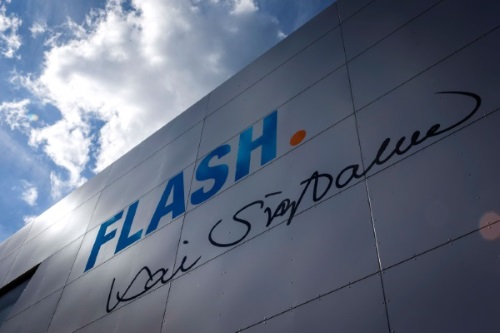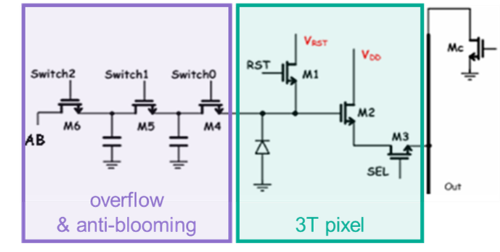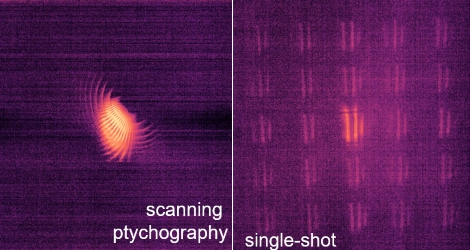FLASH at DESY- free-electron laser in the X-ray range, generating a very special kind of light: extremely intense, ultrashort-pulse X-ray laser flashes.
With modern synchrotron facilities and FELs comes a need for imaging detectors with a challenging combination of demands: large area, small pixels, high frame rates, and a dynamic range spanning reliable single-photon discrimination to tens of thousands of photons per pixel and frame.

Percival in its 2-Megapixel format “P2M” (the design also would allow for a 13-Megapixel variant) provides 1484x1408 imaging pixels of 27x27 um2 each for a total imaging area of ~ 4x4cm2. At 14e- noise, single-photon discrimination is reliable from ~ 250eV upwards, and one pixel can detect up to 3.6 Me- of charge (about 50000 photons at 250eV). Designed to run at 300Hz frame rate (faster if operated in region-of-interest mode), infancy issues of the readout periphery today still limit us to 83 Hz.
The high dynamic range is one of the key features of the sensor – enabled by auto-switching between different-size capacitors in the pixel ad hoc per pixel and per frame.

The high frame rate for the 2Megapixel system with 2x15bit information per pixel and frame (signal as well as CDS information, and gain state) constitutes a challence both on-chip and for the whole system, and requires a high-throughput data back end to handle 20Gbit/s continuous raw data stream.
In order to enable good quantum efficiency at the soft X-ray energies where attenuation lengths are well below a micrometer, special care is needed to keep the entrance windows of the sensor both thin and free of traps or disfavourable fields.
Percival is a DESY-led collaborative effort to develop such an imager for the soft X-ray regime that today includes also Elettra Sinchrotrone Trieste, Diamond Light Source, Pohang Accelerator Laboratory, and Soleil – in addition to STFC/Rutherford Appleton Laboratory, who are designing the CMOS chip itself.

The first prototypes have been used successfully for Ptychography at FLASH, Holography at Petra III, and – in front-illuminated configuration coupled to a scintillator – for tomography at Elettra.
As a first prototype version of the P2M sensor experienced some issues due to crosstalk and sub-optimal bias distribution, fixes in silicon were implemented and the improved “respin” chips commenced tests in 2024.





